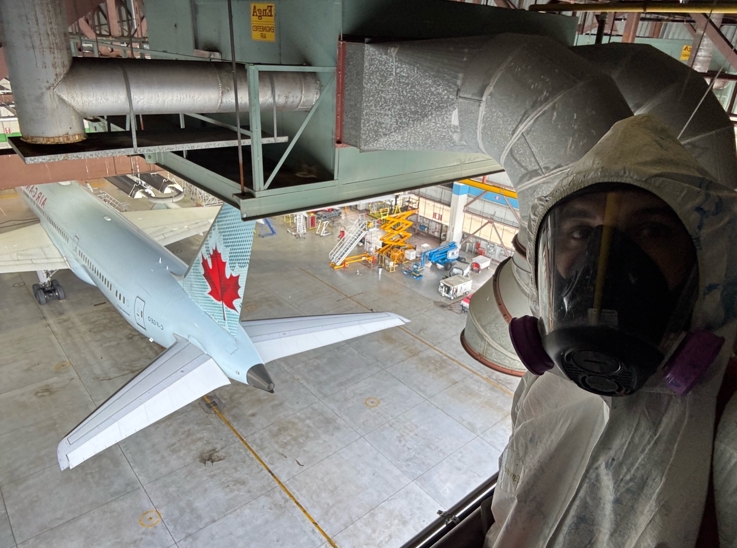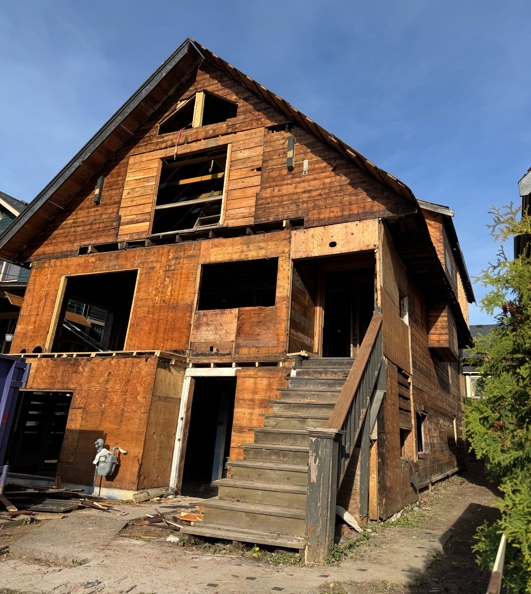Asbestos, once prized for its fire resistance and durability, is now recognized worldwide as a serious health hazard. In Vancouver and across British Columbia, buildings constructed before the 1990s often contain hidden asbestos in insulation, flooring, ceilings, and other materials. Disturbing these materials—whether during renovation, demolition, or routine maintenance—can release microscopic fibers into the air, posing risks of asbestosis, lung cancer, and mesothelioma for occupants and workers alike.
Asbestos removal services in Vancouver are essential to tackle a material once prized for its fire resistance and durability but now recognized as a serious health hazard. In Metro Vancouver and across British Columbia, buildings constructed before the 1990s often contain hidden asbestos in insulation, flooring, ceilings, and other materials. Disturbing these components—whether during renovation, demolition, or routine maintenance—can release microscopic fibers into the air, posing risks of asbestosis, lung cancer, and mesothelioma to occupants and workers alike.

Dorna Asbestos Removal, Demolition & Renovation (Dorna ARDR) combines 24/7 rapid-response availability with fully certified crews and industry-leading protocols to deliver safe, efficient asbestos abatement throughout Metro Vancouver. This comprehensive guide walks homeowners, property managers, and commercial clients through the essentials of asbestos identification, regulatory requirements, removal best practices, and post-remediation clearance—so you can breathe easy knowing your space is secure.
Why Professional Asbestos Removal Matters
- Invisible Threat: Asbestos fibers are too small to see with the naked eye. Once airborne, they can remain suspended for hours and travel throughout a building. Inhalation is the primary route of exposure, and even low-level, chronic inhalation can cause lasting lung damage.
- Long Latency Period: Diseases linked to asbestos exposure often surface decades after the initial contact. By the time symptoms appear—persistent cough, chest pain, or difficulty breathing—it may be too late for effective intervention.
- Strict Regulation: In British Columbia, the removal of asbestos-containing materials (ACMs) is governed by WorkSafeBC and provincial environmental authorities. Non-compliance can result in fines, project shutdowns, and legal liability for property owners and contractors.
Attempting DIY removal or hiring an unlicensed contractor not only jeopardizes health but also invites steep penalties. Only certified asbestos abatement professionals have the training, equipment, and permits required to contain and eliminate ACMs safely.
Understanding Asbestos and Its Dangers
Asbestos refers to six naturally occurring silicate minerals that form durable, heat-resistant fibers. Two primary groups exist:
- Serpentine Asbestos (Chrysotile, or white asbestos) – the most commonly used form in commercial products.
- Amphibole Asbestos (including amosite, crocidolite, tremolite, actinolite, and anthophyllite) – historically used in sprays, insulation, and cement.
When intact and undisturbed, ACMs pose minimal risk. But once cut, sanded, or broken, fibers become friable—easily crumbled and released into the air. Inhaled fibers embed in lung tissue, triggering inflammation, scarring, and, over time, diseases such as:
- Asbestosis: Progressive lung fibrosis that impairs breathing.
- Lung Cancer: Risk skyrockets for smokers exposed to asbestos.
- Malignant Mesothelioma: Aggressive cancer of the lung or abdominal lining, nearly always linked to asbestos.
- Pleural Thickening: Scarring of the lung lining that restricts lung expansion.
Because symptoms often manifest 20–50 years post-exposure, early identification and removal of ACMs is critical to prevent future harm.
Identifying Asbestos in Your Vancouver Property
ACMs were widely used in construction materials through the late 1970s and remained legal in Canada until 2018. Common locations include:
- Popcorn Ceilings: The textured, “cottage cheese” finish on older ceilings often contains asbestos.
- Pipe and Duct Insulation: Grey or white wrap on boiler pipes and ductwork.
- Floor Tiles and Adhesives: Vinyl floor tiles (especially 9″×9″) and the mastic used to install them.
- Spray-On Insulation and Wallboard Joint Compounds: Found behind drywall and in wall cavities.
- Cement Siding and Roofing: Exterior cladding, shingles, and fibrous cement panels.

Visible damage—cracks, crumbling edges, or dust—signals that fibers could be releasing. If you suspect asbestos, do not attempt to scrape, sand, or vacuum the area. Instead, engage a licensed asbestos inspector to collect samples and perform laboratory analysis.
Regulatory Framework in British Columbia
Under WorkSafeBC and the BC Ministry of Environment, any renovation, demolition, or maintenance work likely to disturb ACMs must follow stringent procedures:
- Asbestos Survey & Notification
- A certified asbestos surveyor conducts a detailed inspection, collects samples, and prepares an asbestos inventory report.
- For high-risk projects, a “Notice of Project” (NOP) must be filed with WorkSafeBC at least 48 hours before work begins.
- Licensing and Certification
- Effective January 1, 2024, all asbestos abatement contractors in BC must hold a valid Asbestos Abatement License (AAL) and employ certified removal workers.
- WorkSafeBC’s online registry allows verification of contractor licenses and worker competencies.
- Engineering Controls and Work Practices
- Establishing negative-pressure containment, sealing off work areas with polyethylene sheeting, and using HEPA-filtered exhaust to prevent fiber migration.
- Wet removal techniques or controlled dismantling keep fibers from becoming airborne.
- Disposal Requirements
- Asbestos waste must be double-bagged in 6 mil (0.15 mm) polyethylene bags, clearly labeled “ASBESTOS,” and transported under a provincial hazardous waste manifest to an approved disposal facility.
Failure to comply can incur fines up to $100,000 CAD per violation, project delays, and civil liability for exposure-related health claims.
Dorna’s Five-Step Asbestos Abatement Process1. Pre-Job Assessment & Quotation
- A licensed surveyor visits the site to confirm ACM locations, assess risk levels (low, moderate, high), and recommend scope of work.
- Dorna provides a transparent, itemized estimate, including labor, equipment, waste disposal, and clearance testing.
2. Containment Setup
- Erecting secure enclosures with polyethylene barriers, zipper access, and air-lock systems.
- Deploying negative-pressure units fitted with HEPA filters to maintain inward airflow and prevent cross-contamination.
3. Safe Removal Techniques
- Certified technicians don full PPE: P100 respirators or PAPRs, disposable coveralls, gloves, goggles, and boot covers.
- Wet-method removal or controlled dismantling isolates fibers; no dry scraping or pressurized air.
- Meticulous cleanup with HEPA vacuums and wet wiping ensures no residual dust remains.
4. Transportation & Disposal
- Waste is triple-layered: wrapped in two layers of 6 mil poly sheeting, sealed, and clearly labeled.
- A provincial Hazardous Waste Manifest tracks every load from site to licensed disposal facility, ensuring chain-of-custody compliance.
5. Clearance Inspection & Certification
- After removal, a second licensed inspector conducts a visual check and air sample testing per ASTM D7339 standards.
- Upon passing clearance criteria, Dorna issues an Asbestos Clearance Certificate, confirming the space is safe for re-occupancy.
Why Choose Dorna Asbestos Removal?
- 24/7 Rapid-Response Team Emergencies don’t wait for business hours. Dorna’s crews are on call around the clock to secure any hazardous ACM discovery—minimizing downtime and risk.
- Certified Expertise & Trust All technicians hold current WorkSafeBC certifications; Dorna ARDR proudly maintains an A+ rating with the Better Business Bureau. Over 1,250 projects completed and more than 230 satisfied clients in Metro Vancouver.
- Eco-Responsible Practices Every step—from wet abatement methods to HEPA filtration and compliant disposal—prioritizes environmental stewardship and community safety.
- Transparent Communication Clients receive detailed progress updates, digital photo documentation, and clear next steps throughout the project lifecycle.
- Full Suite of Remediation Services Beyond asbestos, Dorna ARDR handles mold removal, lead abatement, vermiculite removal, hazardous waste disposal, demolition, and renovation—providing turnkey solutions under one roof.

Tips for Property Owners: Preparing for Asbestos Removal
- Notify Occupants Early: Provide tenants or employees with a project timeline and safety precautions.
- Clear the Work Zone: Remove personal items and furniture to non-contaminated areas.
- Plan for Temporary Relocation: For projects exceeding two days, consider short-term alternative housing or workspace.
- Ask for Documentation: Always request the Asbestos Inventory Report, Notice of Project, daily containment checks, and final Clearance Certificate.
- Budget Realistically: Abatement costs vary by material type, area size, and risk level—typically ranging from $2,000 for a small room to $40,000+ for large commercial spaces.
Ensuring Peace of Mind: Health and Safety First
Asbestos removal is not merely a renovation task—it’s a critical health intervention. By entrusting Dorna Asbestos Removal, Demolition & Renovation, you secure:
- Certified Compliance: Full adherence to WorkSafeBC, BC Ministry of Environment, and City of Vancouver bylaws.
- Zero-Fiber Guarantee: Clearance testing protocls ensure your space meets stringent safety benchmarks.
- Documentation for Life: Keep all reports and certificates on file—vital for future real estate transactions and liability protection.
- Enhanced Property Value: Professionally remediated properties reassure buyers, tenants, and insurers of a safe living or working environment.
About Dorna Asbestos Removal, Demolition & Renovation
Founded in 2018 and headquartered in Vancouver, Dorna ARDR is British Columbia’s premier environmental remediation specialist. Our certified teams deliver comprehensive asbestos abatement, mold and lead removal, hazardous waste disposal, demolition, and renovation services. Combining rapid-response availability, industry-leading safety protocols, and transparent client communication, Dorna ensures every project safeguards human health, the environment, and your peace of mind.
Media Contact
Company Name: Dorna Asbestos removal, Demolition and Renovation
Contact Person: Sales
Email: Send Email
Phone: (825) 609-7712
Address:1612 Commercial Dr
City: Vancouver
State: BC V5L 3Y4
Country: Canada
Website: https://dornaasbestosremoval24-7.com/
